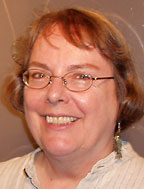Writing to explore ideas
Although visual artists express themselves best with art materials, I think writing is a good tool to include on your work table. Sometimes writing can help you to see clearly what matters the most in your life. This translates into a clearer vision in your art.
When I came home in December with photos of Christmas lights, I didn’t have a particular post in mind. I wanted to show the people on my mailing list a little bit of my world. I also wanted to use the blog to send them a holiday card.
Starting with the photos that I liked, I wrote about what’s nice about Christmas lights. In the beginning it was something like “I like these lights, they’re bright and shiny. There is a long tradition of lights or candles for holidays.”
The process of writing made me put all my thoughts in the computer. And one of them was the idea that I was I was a kid again when I looked at the lights. That was the idea I liked the best. I edited out things that seemed abstract, on the theory that you can read the abstract ideas other places. I wish I had kept my earlier drafts. They might be useful, or at least they would let me see how the process worked. If I had been writing on paper, which I usually do, I would have a couple of pages of messy writing, but I could find the original ideas.
There are books that tell you how to be in touch with your inner artist through writing. As far as I know, they all suggest “just writing.” This doesn’t work for me. I can write for hours about nothing. I do better if I have a place to start. (In this case: why do I like Christmas lights so much?) This isn’t writing as great literature, but writing to find out what really matters to you.
Here are a few general tips:
1. Have a notebook dedicated to these writings.
2. Don’t worry about spelling or punctuation.
3. Let things flow, follow a train of thought, no matter where it goes.
4. Say what you really think. No editing, no censoring at this stage.
5. Don’t ever let anyone else see your writings. If you need something for an artist’s statement you can extract the bits that work and polish them up.
6. Write about something that matters to you. Hopes, dreams or childhood memories could be good places to start. Or you could line up all the art works in your studio and write about what you see there. If something touches you, but you don’t know why, write about that. Be as personal as you can.
7. Don’t feel you have to keep to a schedule. When an idea strikes, write about it. To contradict myself: I do think it’s good to work at it some. Just don’t take the joy out of it by making it a job.
When I came home in December with photos of Christmas lights, I didn’t have a particular post in mind. I wanted to show the people on my mailing list a little bit of my world. I also wanted to use the blog to send them a holiday card.
Starting with the photos that I liked, I wrote about what’s nice about Christmas lights. In the beginning it was something like “I like these lights, they’re bright and shiny. There is a long tradition of lights or candles for holidays.”
The process of writing made me put all my thoughts in the computer. And one of them was the idea that I was I was a kid again when I looked at the lights. That was the idea I liked the best. I edited out things that seemed abstract, on the theory that you can read the abstract ideas other places. I wish I had kept my earlier drafts. They might be useful, or at least they would let me see how the process worked. If I had been writing on paper, which I usually do, I would have a couple of pages of messy writing, but I could find the original ideas.
There are books that tell you how to be in touch with your inner artist through writing. As far as I know, they all suggest “just writing.” This doesn’t work for me. I can write for hours about nothing. I do better if I have a place to start. (In this case: why do I like Christmas lights so much?) This isn’t writing as great literature, but writing to find out what really matters to you.
Here are a few general tips:
1. Have a notebook dedicated to these writings.
2. Don’t worry about spelling or punctuation.
3. Let things flow, follow a train of thought, no matter where it goes.
4. Say what you really think. No editing, no censoring at this stage.
5. Don’t ever let anyone else see your writings. If you need something for an artist’s statement you can extract the bits that work and polish them up.
6. Write about something that matters to you. Hopes, dreams or childhood memories could be good places to start. Or you could line up all the art works in your studio and write about what you see there. If something touches you, but you don’t know why, write about that. Be as personal as you can.
7. Don’t feel you have to keep to a schedule. When an idea strikes, write about it. To contradict myself: I do think it’s good to work at it some. Just don’t take the joy out of it by making it a job.
Labels: Prime the Pump (inspirations)

0 Comments:
Post a Comment
Links to this post:
Create a Link
<< Home